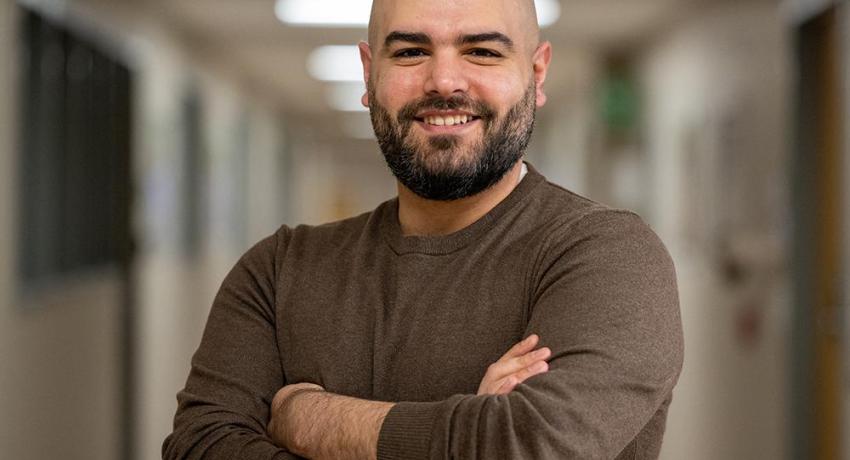Joseph Najem, assistant professor of mechanical engineering, will lead the project to create an energy source capable of powering satellites, cameras, weather sensors and other technologies in space. Credit: Jeff Xu/Penn State / Penn State.
By Mary Fetzer
UNIVERSITY PARK, Pa. — A research lab at Penn State will equally share a three-year, $2.55 million grant from the Air Force Office of Scientific Research (AFOSR) with three other teams at Carnegie Mellon University and the Adolphe Merkle Institute of the University of Fribourg in Switzerland. The multidisciplinary research collaboration aims to develop a framework for the design and production of soft, self-charging, bio-inspired power sources for applications in space.
Joseph Najem, assistant professor of mechanical engineering at Penn State, will lead the project to create an energy source capable of powering satellites, cameras, weather sensors and other technologies in space. Najem and his team will collaborate closely with Michael Mayer from the University of Fribourg to fabricate and produce the multifunctional polymer- or hydrogel-based power sources. Amir Barati Farimani, Carnegie Mellon University, and Christoph Weder, the University of Fribourg, will focus mainly on simulation and the synthesis of the materials required for production.
“The current challenge in space is that lithium-ion batteries — the kind you’d find in a cell phone or an electric car, for example — are rigid and very high maintenance,” Najem said. “They are expensive to install and require a lot of technology to keep them running. There is also a safety concern due to the potential of explosion when overcharged.”
Space applications could benefit from a compliant, self-sustainable power source, according to Najem, one with chemical and physical properties optimized to withstand extreme conditions and with an electrical performance that is suitable for low-Earth orbit missions.
The inspiration for such a power source comes from the charge-separation principle used by electric fish, which have organs that produce electrical discharges for predation and defense.
Najem said that recent studies have exhibited hydrogel-based power sources that, like an electric fish, move charged ions across selective membranes to produce high voltages of power. However, these power sources could not withstand the extreme temperatures in space and are not self-sustainable, which is critical for space applications. Electric fish recharge simply by eating, harvesting energy from their environment. According to Najem, in space, the power source could similarly recharge, using an available resource — such as the sun — the way the fish use food.
“We believe that a soft polymer- or hydrogel-based material has the potential, conceptually at least, to operate autonomously,” Najem said. “The resulting system will be multifunctional and stimuli-responsive, capable of producing power on demand.”
This is the second of two grants Najem’s lab has received this year. The first was a $450,000 award from the AFOSR’s 2023 Young Investigator Program.

